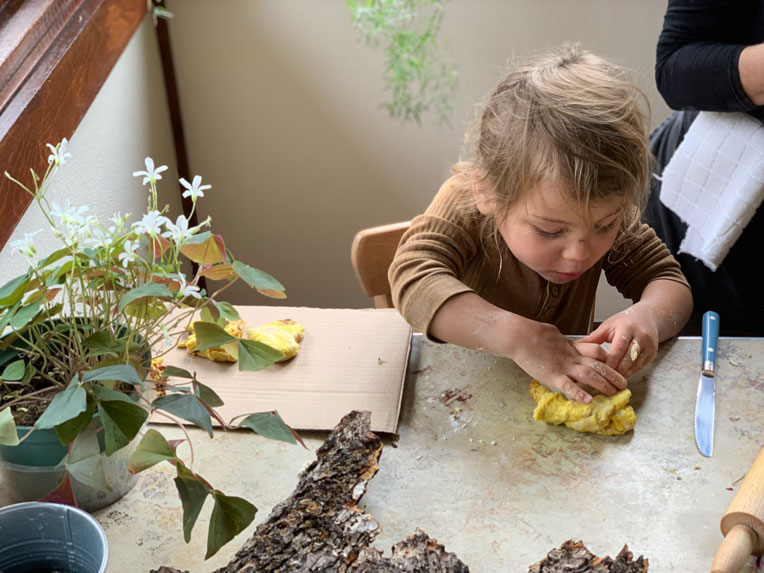レッジョエミリア教育は、子どもの主体性を尊重し、個々の興味や好奇心を深めることを目的とした教育哲学です。このアプローチは、イタリアのレッジョエミリアという町で始まり、今では世界中で注目されています。特に、子どもの「自分で考える力」や「創造性」を育てる方法として高く評価されています。
家庭でレッジョエミリア教育を実践することは、特別な設備がなくても可能です。本記事では、家庭でこの教育を取り入れるための具体的な5つのポイントを紹介します。日常生活に少しの工夫を加えるだけで、子どもの学びが大きく広がるでしょう。
1. 子どもの興味を観察する
レッジョエミリア教育の基本は、子どもの興味や好奇心を尊重することです。そのためには、まず親が子どもを注意深く観察し、何に興味を持っているのかを見極める必要があります。
観察のポイント
- 遊び方を見る:子どもがどんなおもちゃや道具に興味を示しているかを観察します。たとえば、ブロックで遊ぶのが好きなら、建築や構造に興味があるかもしれません。
- 質問に注目する:子どもがよく口にする「なぜ?」や「どうして?」に耳を傾けましょう。質問には学びのヒントが隠されています。
- 行動のパターンを知る:特定の活動を繰り返す場合、それが子どもの興味の中心であることが多いです。
観察した内容をメモに残しておくと、後で活動を計画する際に役立ちます。
2. 環境を整える:「第3の教師」としての家
レッジョエミリア教育では、環境を「第3の教師」と呼び、子どもが自然に学びたくなるような空間づくりを重視します。家庭でも、子どもの学びを促進する環境を整えることが大切です。
家庭での環境づくりのポイント
- 専用スペースを設ける:子どもが自由に使えるアートコーナーや工作スペースを作ります。テーブルや棚に画材や道具を置くだけでも十分です。
- 自然素材を取り入れる:木のブロック、石、葉っぱなど、自然物を使った遊びを取り入れることで、感覚を刺激し学びを深めます。
- 子どもの手が届く配置にする:モンテッソーリ教育にも通じますが、子どもが自分で物を取り出し、片付けられるような配置を心がけます。
環境を整えることで、子どもが自分から学び始める機会を作ることができます。
3. 対話を通じて学びを深める
レッジョエミリア教育では、子どもと大人が「対話」を通じて学びを深めることが重要とされています。ここでの対話とは、単に話すだけでなく、子どもの考えや気持ちを引き出すようなコミュニケーションを指します。
対話の具体例
- オープンな質問をする:
「どうしてそう思ったの?」
「この絵は何を描いているの?」
「このおもちゃで何を作りたい?」
といった質問を投げかけます。 - 子どもの意見を尊重する:
子どもが答えた内容を否定せず、「面白いね」「そうなんだ」と肯定的に受け入れる姿勢が大切です。 - 共感しながら新たな学びにつなげる:
たとえば、「お花が咲いているのは太陽が当たっているからだね。じゃあ、日陰ではどうなるのかな?」と次の学びにつながるような問いを提案します。
対話を通じて、子どもは自分の考えを深め、新しい発見をする機会を得られます。
4. プロジェクト型学習を取り入れる
レッジョエミリア教育の大きな特徴であるプロジェクト型学習を家庭で取り入れると、子どもの興味を長期的に育むことができます。プロジェクト型学習とは、特定のテーマについて子どもが主体的に探究し、さまざまな方法で学びを深めていくアプローチです。
家庭でできるプロジェクト例
- 植物を育てるプロジェクト:
家庭菜園を始めて、植物の成長を観察します。種をまき、水をやり、成長の記録を写真や絵で残すことで学びを広げられます。 - 建築プロジェクト:
レゴや段ボールを使って、子どもが好きな建物や街を作るプロジェクトを進めます。完成後に家族で発表会をしてみましょう。 - 自然観察プロジェクト:
近所の公園で昆虫や鳥を観察し、図鑑と照らし合わせて学ぶ活動を取り入れます。
プロジェクトは短期間で終わらせる必要はありません。子どものペースに合わせて進めることが重要です。
5. 学びを記録し共有する
レッジョエミリア教育では、学びのプロセスを「記録」することが重視されています。この記録は、子どもの成長を振り返るだけでなく、家族や地域社会と共有することで学びを深める役割も果たします。
記録の方法
- 写真を撮る:
子どもが作った作品や遊びの様子を写真に残します。 - 絵日記を書く:
子どもにその日楽しかったことや学んだことを絵や言葉で表現させる習慣をつけます。 - 親子でアルバムを作る:
プロジェクトの過程や成果をまとめたアルバムを作り、一緒に振り返る時間を設けましょう。
記録を通じて、子どもは自分の努力を再確認し、自信を持つことができます。
まとめ
レッジョエミリア教育を家庭で実践するための5つのポイントを紹介しました。
- 子どもの興味を観察する
- 環境を整える
- 対話を通じて学びを深める
- プロジェクト型学習を取り入れる
- 学びを記録し共有する
これらの実践方法は、特別な道具や知識がなくても始められるものばかりです。子どもの個性を尊重し、日々の生活の中で学びを広げる工夫を楽しんでみてください。子どもの成長と共に、親も新たな発見を得られるはずです。
5 Tips for Practicing the Reggio Emilia Approach at Home
The Reggio Emilia approach is an educational philosophy that values children’s autonomy and seeks to nurture their curiosity and interests. Originating in Reggio Emilia, Italy, this approach is now recognized globally as a highly effective way to foster creativity and critical thinking in children.
You don’t need special facilities to incorporate the Reggio Emilia approach at home. With small adjustments to your daily life, you can significantly enhance your child’s learning experiences. In this article, we’ll share five practical tips to help you bring the Reggio Emilia philosophy into your home.
1. Observe Your Child’s Interests
The foundation of the Reggio Emilia approach is respecting and nurturing a child’s interests and curiosity. To do this, parents must carefully observe their child to identify what captures their attention.
Key Points for Observation
- Pay attention to playtime:
Notice which toys or tools your child gravitates toward. For example, if they enjoy building blocks, they might have an interest in architecture or structures. - Listen to their questions:
Children’s frequent “why” or “how” questions often provide clues to their areas of curiosity. - Recognize behavioral patterns:
If your child repeatedly engages in a specific activity, it is likely a core interest.
Keeping a journal of your observations can be helpful when planning activities later.
2. Create a Nurturing Environment: The Home as the “Third Teacher”
In the Reggio Emilia approach, the environment is considered the “third teacher.” This means creating a space that naturally encourages children to explore and learn. At home, you can set up an environment that fosters curiosity and self-directed learning.
Tips for Creating a Learning Environment at Home
- Set up dedicated spaces:
Create an art or craft corner where your child can freely use materials like paper, glue, and scissors. - Incorporate natural materials:
Use items like wooden blocks, stones, and leaves to stimulate sensory experiences and deeper engagement. - Make items accessible:
Place materials within your child’s reach so they can independently take what they need and put it back.
A well-prepared environment can spark your child’s natural curiosity and encourage self-initiated learning.
3. Use Dialogue to Deepen Learning
A key principle of the Reggio Emilia approach is learning through “dialogue” between children and adults. This involves more than just talking—it’s about asking questions and drawing out a child’s thoughts and feelings.
Examples of Effective Dialogue
- Ask open-ended questions:
“Why do you think that happened?”
“What are you drawing? Can you tell me about it?”
“What do you want to build with this toy?” - Respect their opinions:
Respond positively to their answers, saying things like, “That’s interesting” or “I see.” Avoid dismissing or correcting their thoughts. - Encourage further exploration:
For example, you might say, “This flower is blooming because it gets sunlight. What do you think happens in the shade?”
Through dialogue, children can deepen their understanding and discover new ideas.
4. Incorporate Project-Based Learning
One of the hallmarks of the Reggio Emilia approach is project-based learning, which involves exploring a topic of interest in depth over an extended period. At home, you can introduce projects to help your child engage deeply with their interests.
Examples of Home Projects
- Plant-Growing Project:
Start a small garden where your child can plant seeds, water them, and observe their growth. Document the process with drawings or photos. - Building Project:
Use LEGO or cardboard to construct buildings or towns together. You can even host a “family presentation” to showcase the final creations. - Nature Observation Project:
Go to a nearby park to observe insects, birds, or plants. Use a field guide to identify species and learn more about them.
Projects should be flexible and progress at your child’s pace. There’s no need to rush or impose deadlines.
5. Document and Share the Learning Process
Documentation is an essential element of the Reggio Emilia approach. Recording a child’s learning journey not only allows you to reflect on their growth but also provides opportunities to share their progress with others, enriching the experience.
Ways to Document Learning
- Take photos:
Capture your child’s creations and moments of discovery. - Create a journal:
Encourage your child to draw or write about what they learned each day. - Make a family album:
Compile the progress and results of projects into an album and review it together.
Documentation helps children revisit their efforts, fostering a sense of accomplishment and confidence.
Conclusion
We’ve explored five tips for practicing the Reggio Emilia approach at home:
- Observe Your Child’s Interests
- Create a Nurturing Environment
- Use Dialogue to Deepen Learning
- Incorporate Project-Based Learning
- Document and Share the Learning Process
These practices don’t require special tools or extensive knowledge—they are simple adjustments you can make in your daily life. By respecting your child’s individuality and nurturing their curiosity, you can help them discover the joy of learning. As your child grows, you too will experience new insights and moments of wonder.




コメント